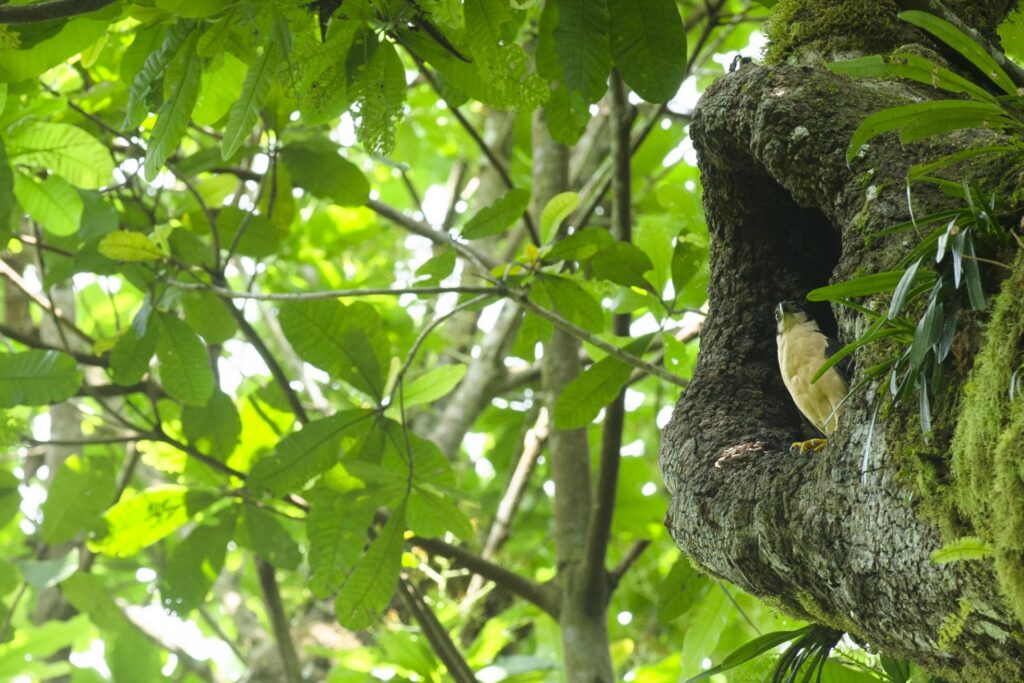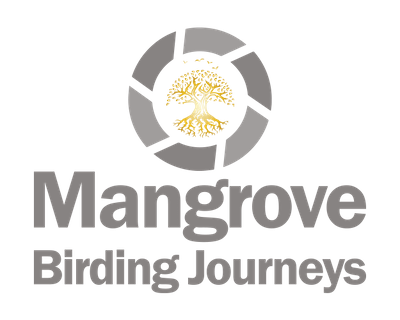
Collared Forest Falcon is a common specie in the lowlands of the Pacific coast of Costa Rica, located from the northwest región of Guanacaste to the deep rainforest of Osa Peninsula. Locally is common in general terms yet does not means is going to be easy to see. It calls very early in the mornings even before sunrises. It’s incredible flying skills in the forest makes it a keen hunter in both forest floor and high canopy. Confused by many with an eagle due is aggressive look this Falconiform only reaches 86 cm of
wingspan and up to 58 cm in length.
Hunts birds, snakes, small vertebrates and occasionally due deforestation visits backyards for free range chickens.
SUBSPECIES AND RANGE:
The Collared Forest-Falcon has two subspecies.
M.s. naso is found in NW and NE Mexico, S through Central America to N and W Colombia, W Ecuador and extreme NW Peru (Tumbes). This race is very similar to nominate, but it is slightly larger and darker in all plumages.
M.s. semitorquatus (described above and displayed) occurs in E Colombia, E to the Guianas, and S through E Ecuador, E Peru, N and E Bolivia, and Brazil to Paraguay and N Argentina.
Some hot spots to find such a marvelous raptor in the nearby areas of Carara National Park are the Mangroves in Playa Azul-Tarcoles in our main property; Piedra Bruja’s Road near Jaco and in the forest edges at Cerro Fresco Playa Hermosa.
Interesting enough Micrastur semitorquatus is a thief, sealing nest hole cavities from a very large number of medium size birds up to Scarlet Macaws, this year we were able to find at the Universal trail at Carara a pair whom stole a 10 years home of Macaws. The tree in which they were breeding had plenty room for another couple but those falcons had beaten up intruders such as Black Vultures, Spectacle Owls and the former resident multiple times.

For more than 12 years (as far as we know) a pair (uncertain if it’s the same couple) of Scarlet Macaws have been taking ownership of this nest located at the junction of Quebrada Bonita & Universal trails at Carara National Park. But it was not until recently that a couple of Collared Forest Falcon fought aggressively with them in order to take over such a marvelous cavity in a 140 feet tall Wild Cashew Tree (Anacardium excelsum).
We have witness them walking in the forest floor catching snakes and other reptiles but at the Mangroves of Guacalilllo is more commonly found in the mid canopy presumably hunting down small birds such as parakeets, trogons and woodpeckers. Although there is only one specie seldom there could be a dark morph that can be easy confused with another raptor with brown or dark coloration, but its large tail is a key feature for field mark identification. In the book of birds of Costa Rica by Richard Garrigues 3 drawing show the possible main characteristics.
BirdLife International (2012). “Micrastur semitorquatus”. IUCN Red List of Threatened Species.
^ Jump up to: a b “Collared Forest Falcon Micrastur Semitorquatus”. Cornell Lab of Ornithology.
^ Jump up to: a b c d e f g h i j k l m n o p q r s t u Thorstrom, Russell K. (2012). “Collared Forest Falcon”. In Whitacre, David F. (ed.). Neotropical Birds of Prey. New York: Cornell University Press. pp. 250–264. ISBN 978-0-8014-4079-3.
^ Jump up to: a b c Mauersberger, Gottfried (1978). Urania Állatvilág. Budapest: Gondolat Kiadó. p. 135.
^ Gill, Frank; Wright, Minturn (2006). Birds of the World : Recommended English Names. Princeton: Princeton University Press. pp. 30–31. ISBN 978-0-691-12827-6.
^ “Collared Forest Falcon Micrastur semitorquatus”. The Peregrine Fund: Global Raptor Information Network. 27 July 2012.
^ “Collared forest falcon – Micrastur semitorquatus”. BirdLife International (2016)
Species factsheet.
^ Jump up to: a b c Thorstrom, Russell (September 2000). “The food habits of sympatric forest-falcons during the breeding season in northeastern guatemala”. Journal of Raptor Research. 34 (3): 196–202.
^ Jump up to: a b c d e f Thorstrom, Russell (2001). “Nest-site characteristics and breeding
density of two sympatric forest-falcons in Guatemala”. Ornitologia Neotropical. 12:
337–343.
^ Jump up to: a b c d e Thorstrom, Russell; Ramos, José D.; Castillo, José M. (2000).
“Breeding biology and behavior of the Collared Forest-Falcon (Micrastur Semitorquatus) in Guatemala”. Ornitologia Neotropical. 11 (1): 1–12 – via ResearchGate.
